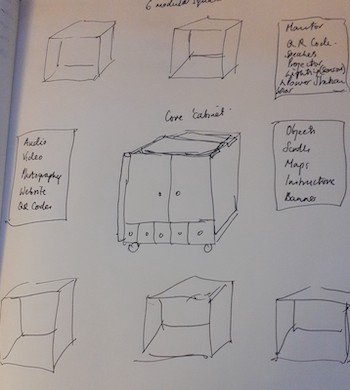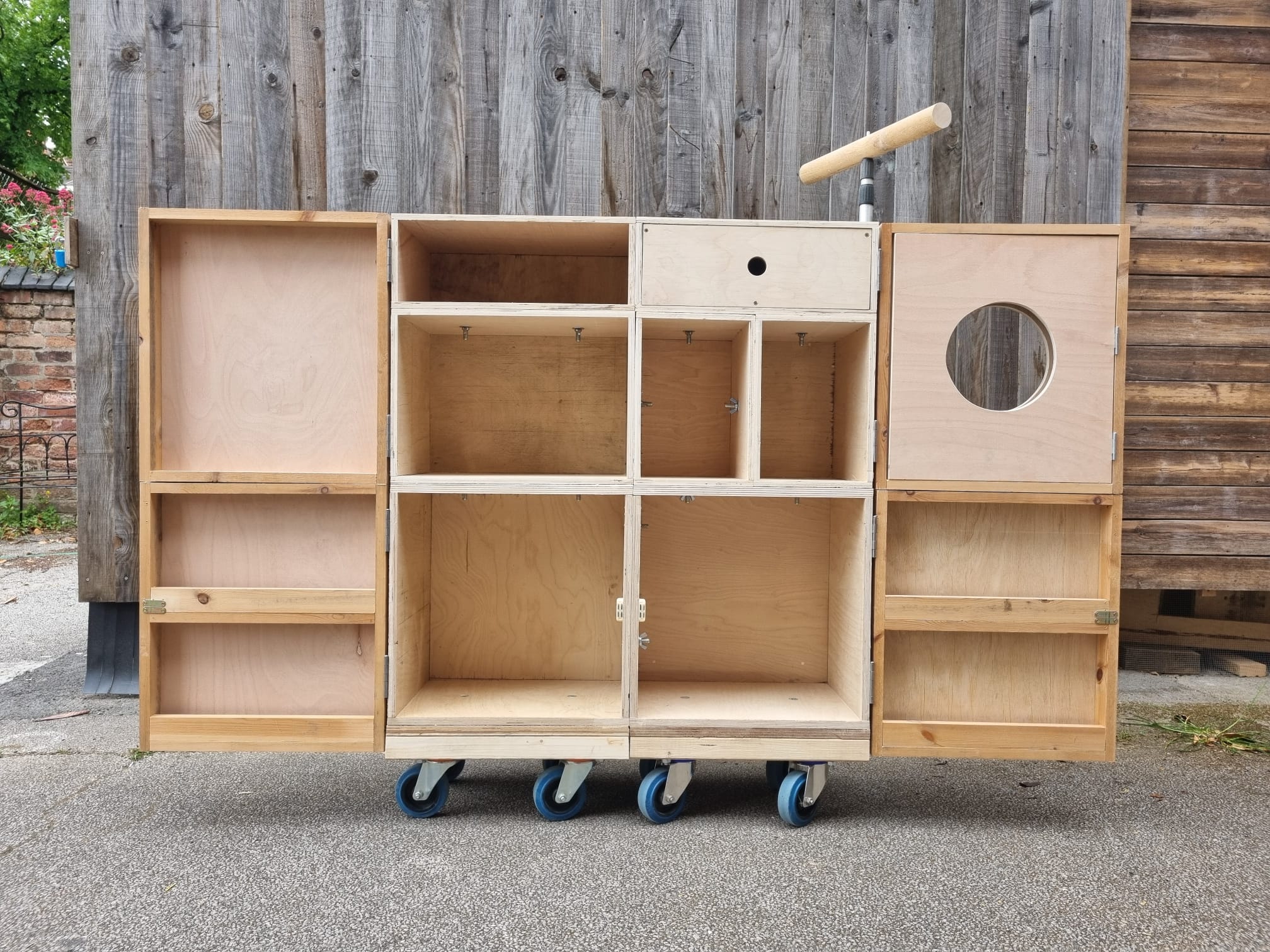


The Cabinet of Curious Places is a transportable wooden box embedded with objects, data, audio and video, that expands out to include a handsewn banner and larger objects, videos and narratives. QR codes act as a key, linking the objects to the five places on the map of England, on the banner. People are invited to explore, unravel the stories of each place by connecting objects to places, to open drawers, put on the headphones and listen to music, read, watch and discover.
The cabinet tells stories of how the people and ecologies across five ‘curious’ places in England respond to change and remain resilient in these increasingly uncertain times. The cabinet will be carried from place to place, appearing alongside a mysterious interactive artwork, the Future Machine, and a series of ritualised artist interventions, engaging communities in each very different locality. The project builds on an ambitious 30 year collaborative and generative project in Christ Church Gardens a memorial garden, Nottingham; Finsbury Park, London; the Windermere-Leven waters, rural Cumbria; Peppard a village in Oxfordshire; and Cannington, Somerset.
The Cabinet of Curious Places is available to exhibit anywhere, unlike Future Machine and the rituals for when the future comes which are attached to the five places across England.
Throughout 2024-25 The Cabinet will be exhibited in the schools, arts venues & community spaces local to the 5 places where interventions take place, as the stories and design of the cabinet emerges. It has already been exhibited in Nottingham and is currently being exhibited in ‘Our Stories Are Wild’ at Derby Cathedral.
As The Cabinet develops people in each place will also be invited to contribute their own artefacts and stories by participating in workshops, drop-ins and interacting through this website, we hope this will facilitate long-term engagement with the stories of when the future comes as well as encouraging people to become Guardians of the Future Machine.
The People
The Cabinet of Curious Places has been created by Rachel Jacobs, Juliet Robson, Frank Abbott, Caroline Locke, Wallace Heim, Esi Eshun, Alex Dayo and Dave Kemp. It has been built by artist/architect/designer Will Harvey, with support from artist/creative programmer Robin Shackford and artist Ismail Khokon.
The collaborating artists and musicians will continue to work together to develop the artefacts and stories contained in the cabinet, whilst building a new collaborative model to sustain the whole project into the future.
We are continue to work with Dominic Price and researchers from the Mixed Reality Lab and Horizon at the University of Nottingham to study the impact of the artwork and Prof Esther Eidinow, Chair in Ancient History at the University of Bristol to explore the importance of the ineffable in the landscape of each place. We are also developing a new research collaboration with Prof Gabriella Giannachi, Professor of Performance and New Media at the University of Exeter and Professor Theano Moussouri at UCL, exploring ways to ‘archive the future’ throughout the project.
We hope to continue to publish our findings to an international academic audience as well as start a book project that runs parallel to The Cabinet of Curious Places, working with Beam publishing to develop ideas for publishing a 5 yearly print edition exploring the emerging themes of the project.
The Design
The Cabinet of Curious Places is designed to be modular, fold out and in and be adaptable to the spaces, places and contexts where it is installed. The individual boxes can be turned into a larger or smaller cabinet and display area, can be separated out into distinct units, or folded down to one, so that a core ‘cabinet’ can be used to move and contain the stories as a very simple and lightweight object.
A large banner shows the ‘Journey of the Future Machine’ and acts as a key to the cabinet, connecting the artifacts, stories and places together through the QR codes, linking back to this website. Inside a porthole you can view ‘What Future Machine Saw’, captured by Future Machine during the appearances in each place, every year since 2020.
Each artist has contributed artifacts and/or media elements to tell their part of the story. Each distinct part of the story will come together to tell the whole.
The Cabinet (as with the Future Machine) has been created as much as possible from sustainable materials and their provenance will be researched. Any technology that can be, has been developed or bought as second hand or refurbished and with the view of being able to be sustained and maintained until 2050. We are also exploring ways to connect The Cabinet to the Future Machine’s solar umbrella so that it can run on renewable power.
